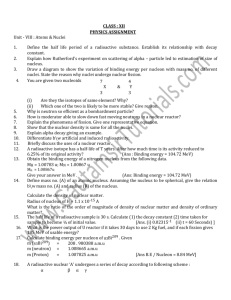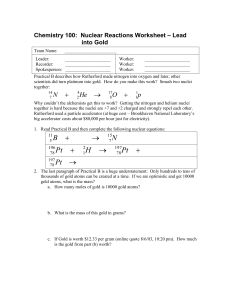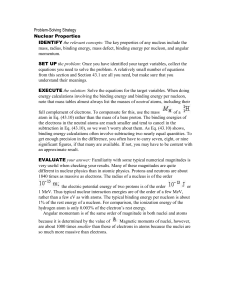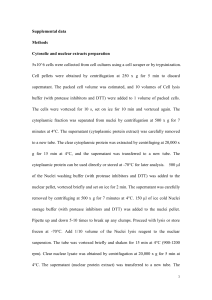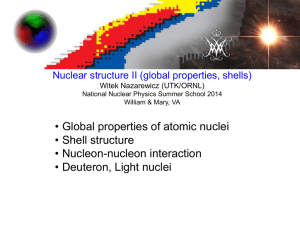Problem Solving Class: Van Quark tot Biomaterie
advertisement
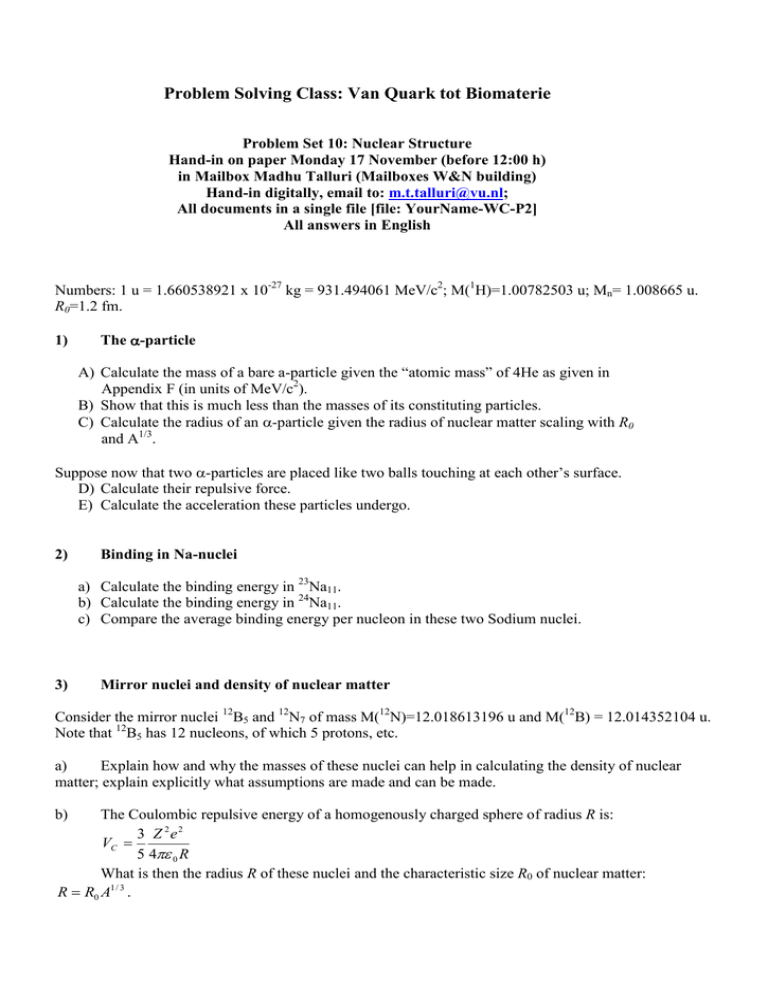
Problem Solving Class: Van Quark tot Biomaterie Problem Set 10: Nuclear Structure Hand-in on paper Monday 17 November (before 12:00 h) in Mailbox Madhu Talluri (Mailboxes W&N building) Hand-in digitally, email to: m.t.talluri@vu.nl; All documents in a single file [file: YourName-WC-P2] All answers in English Numbers: 1 u = 1.660538921 x 10-27 kg = 931.494061 MeV/c2; M(1H)=1.00782503 u; Mn= 1.008665 u. R0=1.2 fm. 1) The -particle A) Calculate the mass of a bare a-particle given the “atomic mass” of 4He as given in Appendix F (in units of MeV/c2). B) Show that this is much less than the masses of its constituting particles. C) Calculate the radius of an -particle given the radius of nuclear matter scaling with R0 and A1/3. Suppose now that two -particles are placed like two balls touching at each other’s surface. D) Calculate their repulsive force. E) Calculate the acceleration these particles undergo. 2) Binding in Na-nuclei a) Calculate the binding energy in 23Na11. b) Calculate the binding energy in 24Na11. c) Compare the average binding energy per nucleon in these two Sodium nuclei. 3) Mirror nuclei and density of nuclear matter Consider the mirror nuclei 12B5 and 12N7 of mass M(12N)=12.018613196 u and M(12B) = 12.014352104 u. Note that 12B5 has 12 nucleons, of which 5 protons, etc. a) Explain how and why the masses of these nuclei can help in calculating the density of nuclear matter; explain explicitly what assumptions are made and can be made. b) The Coulombic repulsive energy of a homogenously charged sphere of radius R is: 3 Z 2e2 VC 5 4 0 R What is then the radius R of these nuclei and the characteristic size R0 of nuclear matter: R R0 A1 / 3 . 4) Are the following decays possible or not possible ? U 232 92 U n a) 233 92 b) 40 19 39 K 19 K n

